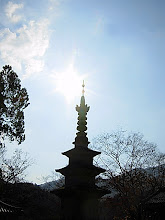Loose leaf Korean green tea is expensive. There are many things that result in the high price of Korean tea.
Firstly, there is not so many tea producing areas in Korea. Not so much tea is produced. Almost everything that is produced is consumed in Korea. In fact, most tea consumed in Korea, isn't even Korean tea but comes from China, Vietnam, or other neighbouring nations that can produce tea much more cost effectively.
Secondly, the labour cost of producing tea in Korea isn't cheap. Remember Korea is a G-20 nation, one of the most developed countries in the world. The cost of production is therefore much higher then that of neighbouring nations like China and Vietnam.
Thirdly, most loose leaf tea is produced by hand in Korea- a very labour intensive way to produce tea. The only tea in Korea that is produced almost entirely by machine is from O'sulloc Tea Company on Jeju Island. All other tea that is produced in Korea have some stage that requires human labour.
The tea produced from Jiri Mountain and surrounding area, is thought of as the best tea in Korea and is produced entirely by hand from the picking of the leaves to the bagging of the leaves. Except for those who live in that area, tea of this quality is a luxury.
This year one has gotten some signals of how tight economic times are effecting the market for premium Korean tea...
There is only one tea producing season in Korea- it is in the Spring, starting in early April and pretty much ending in early summer (although there are sometimes rare autumnal teas produced in the fall). Because the timing of the 'global economic crises', being that things really fell apart in the fall of 2008, the spring 2008 tea production went on as usual. As the crisis loomed, Koreans cut back. This resulted in less loose leaf tea being purchased and less high end tea being bought up.
With tea from the 2008 season still available for sale and with indicators that the demand for high end Korea tea just wasn't there, many small scale producers simply didn't produce tea this year. The ones that did perhaps chose to produce more Saejak (2nd flush) than the more labour intensive, expensive Ujeon (first flush) grades.
For instance, small producer 'Nok Ya Won' was planing on making a Seajak grade instead of Ujeon this year but instead decided to just sell off the remaining Ujeon from the 2008 production year and just produce a more cost effective semi-oxidized tea this spring.
Even one of the oldest companies in Korea, Jookro, is offering 80g boxes of Saejak grade as opposed to the 100g boxes offered last year.
The selection of teas this year just seems to lack the local farmers batches that are always interesting to have a spin at.
One is grateful to have, at least, a few of these teas to try out this year.
Note: check out this link to an older post on Economics and Ceramics in Korea.
Peace
2 days ago

1 comment:
Well, I gotta hand it to you. You know your Korean tea. I haven't seen anyone else speak in such detail about the recent goings-on in the Korean world of tea. But it's good to know about the availability of a rather exotic tea here in America. --Spirituality of Tea
Post a Comment